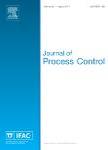版权所有:内蒙古大学图书馆 技术提供:维普资讯• 智图
内蒙古自治区呼和浩特市赛罕区大学西街235号 邮编: 010021

作者机构:Univ Padua Dept Informat Engn Padua Italy Univ Padua Human Inspired Technol Res Ctr Padua Italy Queens Univ Belfast Ctr Intelligent Autonomous Mfg Syst Belfast Antrim North Ireland
出 版 物:《JOURNAL OF PROCESS CONTROL》 (工艺过程控制杂志)
年 卷 期:2019年第84卷
页 面:24-34页
核心收录:
学科分类:0711[理学-系统科学] 07[理学] 0817[工学-化学工程与技术] 08[工学] 070105[理学-运筹学与控制论] 081101[工学-控制理论与控制工程] 0811[工学-控制科学与工程] 0701[理学-数学] 071101[理学-系统理论]
基 金:Nvidia Corporation Nvidia Titan V GPU
主 题:Advanced Process Control Convolutional Autoencoder Deep Learning Etching Feature extraction Industry 4.0 Optical Emission Spectroscopy Semiconductor Manufacturing Soft sensor Virtual Metrology
摘 要:Industry 4.0 encapsulates methods, technologies, and procedures that transform data into informed decisions and added value in an industrial context. In this regard, technologies such as Virtual Metrology or Soft Sensing have gained much interest in the last two decades due to their ability to provide valuable knowledge for production purposes at limited added expense. However, these technologies have struggled to achieve wide-scale industrial adoption, largely due to the challenges associated with handling complex data structures and the feature extraction phase of model building. This phase is generally hand-engineered and based on specific domain knowledge, making it time consuming, difficult to automate, and prone to loss of information, thus ultimately limiting portability. Moreover, in the presence of complex data structures, such as 2-dimensional input data, there are no established procedures for feature extraction. In this paper, we present a Deep Learning approach for Virtual Metrology, called DeepVM, that exploits semi-supervised feature extraction based on Convolutional Autoencoders. The proposed approach is demonstrated using a real world Semiconductor Manufacturing dataset where the Virtual Metrology input data is 2-dimensional Optical Emission Spectrometry data. The feature extraction method is tested with different types of state-of-the-art autoencoder. (C) 2019 Elsevier Ltd. All rights reserved.